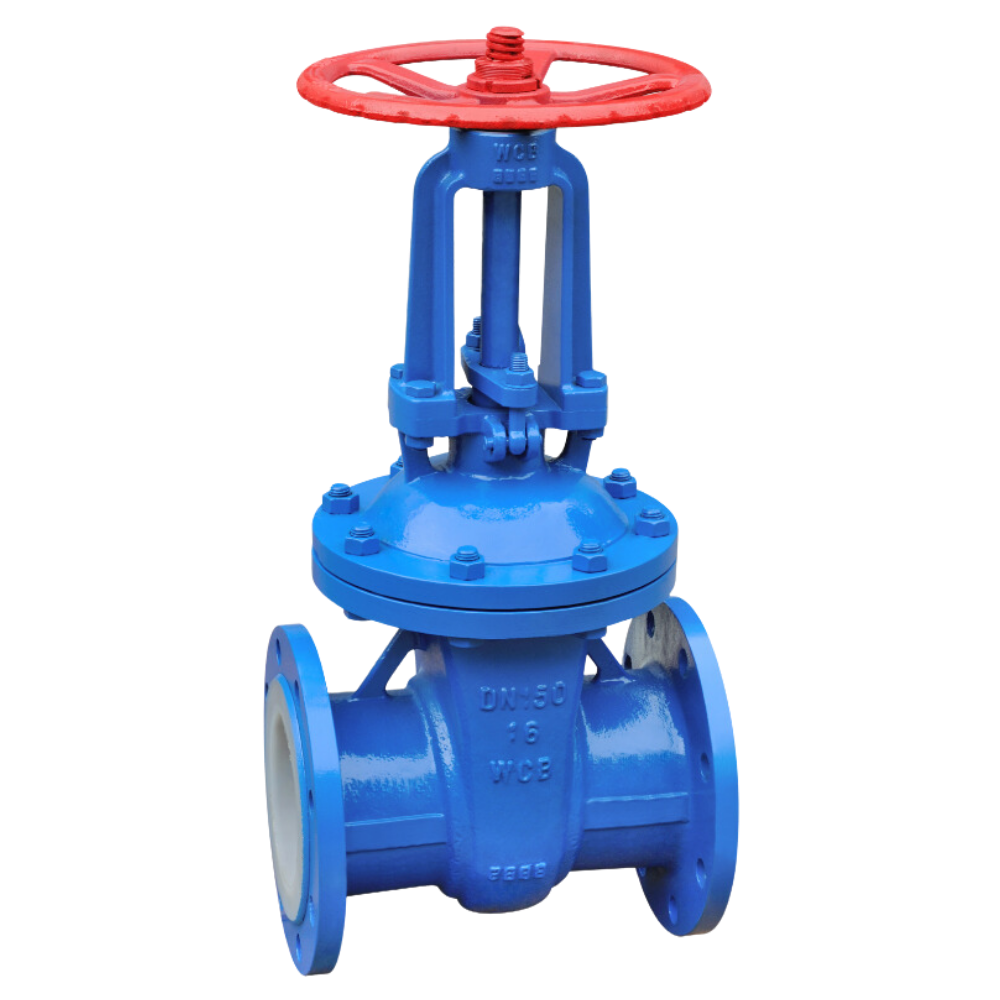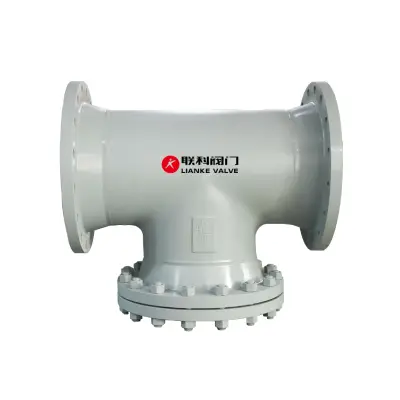

Pinch valves are control valves that use a flexible tube to regulate fluid flow effectively. This article covers what pinch valves are, how they work, their types, benefits, drawbacks, and applications.

A pinch valve is a special kind of control valve. It helps control the flow of rough, chunky, or tough stuff.
Pinch valves are versatile and can be adapted to various applications by selecting the appropriate materials and design. Whether you need to control the flow of abrasive slurries in a mining operation or manage the precise delivery of chemicals in a pharmaceutical process, pinch valves offer a reliable and efficient solution.
How pinch valves work is simple but works great. When the valve needs to close, a squeezer pinches the soft tube. This stops the flow of whatever is going through. This way means there is very little contact between the stuff flowing and the valve parts. This cuts down on dirty buildup and wear.
Actuator Systems control pinch valves by squeezing the sleeve. Compressed air, hydraulic fluid, or electric current powers the actuator that pushes down on the sleeve middle.
How actuators work:
Actuation options include:
The materials used to make pinch valves are picked carefully to handle the needs of different jobs. These can include:
| Material Type | Description and Use in Pinch Valves |
|---|---|
| Neoprene | A synthetic rubber known for its good chemical stability and flexibility, often used for sleeves that require resistance to oils and weathering. |
| Natural Rubbers | Derived from latex, offering excellent elasticity and resilience, suitable for general-purpose sleeves in pinch valves. |
| Silicone | High-temperature resistant elastomer, ideal for applications requiring heat tolerance and flexibility. |
| EPDM | Ethylene Propylene Diene Monomer rubber, highly durable with excellent resistance to heat, ozone, and chemicals; used in harsh environments. |
| FKM | Fluoroelastomer with superior heat and chemical resistance, suitable for aggressive media and high-temperature applications. |
| Plastics | Used for valve bodies and components, offering corrosion resistance and lightweight construction. |
| Stainless Steel | Commonly used for valve bodies and housing, providing strength, durability, and corrosion resistance in demanding environments. |
| Aluminum | Lightweight metal used for valve bodies where weight reduction is important, with moderate corrosion resistance. |
Pinch valves come in different types. Each type serves specific needs in various industries. Choosing the right valve saves time and money for your project.
These valves use compressed air to open and close. Industries love them for fast response times.
Electric current powers these valves through magnetic coils. Engineers choose them for precise control in automated systems.
Microfluidic Pinch Valves
These tiny valves handle very small amounts of liquid. Medical and research labs rely on them for accurate fluid control.
| Advantages of Pinch Valves | Disadvantages of Pinch Valves |
|---|---|
| Cost effective: Generally more affordable than other valves | Operating pressure limited to 150-250 PSI for standard models |
| Reliable operation with minimal failure points | Not suitable for high-pressure systems above 500 PSI |
| Easy to use and maintain | Temperature range limited to -40°F to 200°F (-40°C to 93°C) |
| Rubber sleeve absorbs impact, reducing wear and extending life | High heat reduces sleeve elasticity by up to 60% |
| Smooth flow design prevents clogging and blockages | Cold temperatures can make sleeves brittle and prone to cracking |
| Suitable for abrasive, granular, and corrosive media | Requires proper selection to avoid costly replacements |
| Maintenance costs are generally lower due to simple design | Pressure and temperature limits can affect valve lifespan |
Pinch valves dominate the pharmaceutical industry with their versatility. These valves handle high-purity liquids while maintaining zero contamination risk. Manufacturing facilities rely on pinch valves for critical processes that demand precision.
Wastewater treatment facilities choose pinch valves for their superior flow control capabilities. These valves prevent clogging in harsh environments. Plants experience smooth operation even with abrasive and corrosive media present.
Heavy-duty industries including mining, oil and gas, and chemical processing depend on pinch valves daily. These sectors manage abrasive slurries and challenging media effectively. Operations maintain reliable performance in the harshest industrial conditions.
Regular maintenance of pinch valves is essential to ensure their optimal performance and longevity. Conducting routine inspections and cleaning the valve components are crucial steps in maintaining the valve’s efficiency and cleanliness. Checking the tubing connections for leaks or kinks can prevent operational issues and ensure smooth flow through the valve.
Replacing damaged components promptly is vital to avoid extended downtime and maintain the valve’s performance. Regular evaluations and maintenance can significantly extend the lifespan of pinch valves, ensuring they continue to operate effectively in various applications.
In summary, pinch valves are reliable and easy-to-use valves that control the flow of tough materials like abrasive or corrosive fluids due to their cost-effective and last long strenghth.
Before purchasing a pinch valve, please ensure you have thoroughly considered factors such as pressure, temperature, size, media, and application scenarios, as these factors will significantly impact the service life and performance of the pinch valve.
A pinch valve controls flow by pinching a flexible sleeve, isolating media and reducing wear, ideal for abrasive fluids. A solenoid valve uses electric current to move a plunger that opens or closes the flow. Solenoid pinch valves combine both methods for precise control.
A plug valve uses a rotating plug to control flow, suitable for higher pressures and temperatures. A pinch valve stops flow by pinching a flexible rubber sleeve, ideal for abrasive or corrosive media with minimal contamination. Pinch valves offer better isolation, while plug valves handle tougher conditions.
Extreme temperatures, abrasive media, and corrosive fluids can impact the lifespan and performance of pinch valves. Selecting appropriate sleeve materials and valve designs helps accommodate these conditions and ensures reliable operation.
Yes, pinch valves can be used for both on/off control and throttling applications. Their simple design allows for accurate flow regulation, especially when paired with suitable actuators like solenoid or pneumatic systems.
The design includes a flexible rubber sleeve that isolates the media from the valve body and actuator, ensuring that the fluid only contacts the sleeve. This hermetic separation prevents contamination and protects the valve components.

Gate valves control fluid flow in various industrial applications. They can completely stop or allow flow, depending on the valve’s position. Valves, in general, share the same function — but what makes gate valves different? This article will explore what gate valves are, how they work, their components, types, and common issues, among other important […]

In Brazil’s booming sugar industry, industrial strainers play a crucial role in ensuring clean, uninterrupted production during juice clarification, sugar syrup filtration, and the crystallization process. With sugar mills handling high-viscosity, abrasive fluids like massecuite and syrup, selecting a reliable strainer manufacturer is essential for maintaining syrup purity, minimizing downtime, and meeting hygiene standards. This […]

South Africa’s gold mining sector relies heavily on robust flow control systems that can withstand abrasive slurry and harsh tailings. Heavy-duty pinch valves play a crucial role here, offering durability, low maintenance, and resistance to extreme pressure. In this guide, we rank the Top 5 Heavy-Duty Pinch Valve Manufacturers South African mines trust for reliability. […]

Desalination facilities in Saudi Arabia face one of the most extreme operating environments—high salinity, abrasive media, and fluctuating brine discharge pressures. In this high-demand sector, pinch valves play a vital role in managing flow control for seawater reverse osmosis (SWRO) and thermal desalination processes. This guide ranks the top 5 pinch valve manufacturers for Saudi […]



